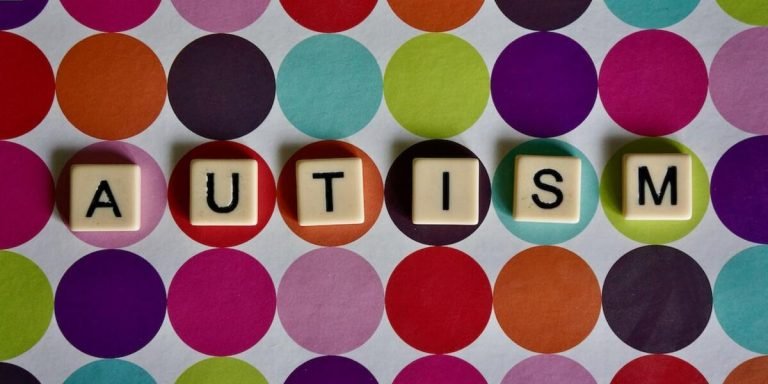Autism Learning Disability: Understanding its Impact on Childhood Education
Autism Learning Disability is a subject that every parent and educator needs to know about, as it has a significant bearing on childhood education. This particular type of learning disability can manifest in various forms affecting social interaction, communication skills and behaviour aspects predominantly. Acquiring complete understanding will allow us to create an environment where children with autism can learn effectively.
In this blog post, we aim at providing comprehensive insights into “autism learning disability” – the nature of its impact on educational systems designed for young learners and possible approaches towards overcoming these challenges. As all-encompassing special education resources coupled with continuous support become critical tools in addressing such situations, ensuring their availability becomes our collective responsibility.
Did you know?
Contrary to common misconceptions, children with autism often display unique abilities in areas such as music and visual skills. In fact, around 10% of autistic individuals exhibit “savant” capabilities, far higher than the general population’s estimate of 1%.
Understanding Autism Spectrum Disorder and Learning Disabilities
Learning disabilities and Autism Spectrum Disorder (ASD) are two separate categories but they often intertwine. ASD is a neurodevelopment disorder with symptoms appearing in early childhood, usually before three years old. Individuals on the spectrum have difficulties with social interaction, communication skills, and may exhibit repetitive behaviors or narrow obsessive interests.
On the other hand, learning disabilities refer to an array of disorders that hinder one’s ability to process or retain information effectively – not because of cognitive disability but due to issues within the brain itself affecting how it receives processes stores retrieves or utilizes information.
Let’s examine the intersection between autism and learning disabilities. A significant proportion of children with ASD also face specific learning difficulties such as:
- Dyslexia, which impacts reading abilities
- Dyscalculia, affecting understanding of numbers
- Dysgraphia, interfering with writing capabilities
Determining whether academic challenges come from direct autistic traits like sensory problems, attention deficits, language delays etc., isn’t always straightforward. However, research has shown relatively high comorbidity rates between them.
Identifying Signs of Autism in the Context of Special Education
In the realm of special education, recognizing signs of autism is critical. By doing so, parents and educators can provide enhanced attention to children with an “autism learning disability”. This part will focus on how you can identify these specific elements.
The first step in identifying signs of autism involves understanding its diverse nature. Autism Spectrum Disorder (ASD) displays a range of conditions characterized by challenges in social skills, speech and nonverbal communication, along with repetitive behaviors. Know that every individual experiences ASD differently; it effects manifest through a spectrum varying from mild to severe.
Educators must pay heed to key behavioral changes or patterns among students such as difficulties in maintaining eye contact during conversation or aversion towards physical touch – both common traits within autistic individuals. Another sign may be disproportionate reactions to sensory stimulants like light or sound which are generally tolerable for others.
Next comes delayed language skills – one clear indicator being if there’s refusal or problems when trying to mimic simple verbal expressions that peers easily replicate at similar age levels . Also note any obsessive interests particular pupils might have regarding very narrow topics; this could hint towards fixation – another characteristic trait associated with autism learning disabilities.
Technological integration into eduction has proven valuable for spotting potential developmental issues including those related with ASD early on. Many interactive tools today help monitor student activities closely thereby enabling detection even before traditional methods would allow recognition .
Strategies for Tailoring Educational Resources to Autistic Learners
Autism Spectrum Disorder (ASD) presents a unique set of challenges for children in the educational sphere. It’s important to understand that autism learning disability does not reflect an individual’s intelligence, but may influence how they perceive and process information. In order to provide suitable support, we must tailor educational resources effectively towards their divergent mental pathways.
Voice response technologies are another asset educators should utilize when tailoring lessons; these help by translating spoken language into text-based formats increasing comprehension levels among children with autism learning disabilities.
Online forums connect teachers globally allowing them exchange best practices about instructional strategies aiding special needs populations such as those on the spectrum specifically relating it back to our target keyword “autism learning disability”. Collaborative digital platforms allow resource sharing where guidelines focused on specific accommodations benefit every student involved reducing stigma typically associated around special education demands.
Gamification also plays integral role promoting fun-filled experiential journeys while simultaneously reinforcing key academic concepts making complex subjects more digestible particularly constructive strategy considering gamified apps motivate rather than intimidate benefiting both neurotypical peers inclusive classrooms alike – win-win everybody!
Navigating Support Systems for Students with Autism-Related Learning Challenges
In the sphere of childhood education, it’s an undeniable fact that students with Autism-related learning disabilities often face unique challenges. Addressing these needs requires a keen understanding and utilization of specialized support systems designed specifically to aid their educational journey. As educators and parents, our goal should be not just about providing equal opportunities but crafting personalized pathways in 2023.
Technology has revolutionized every aspect of our lives – from how we communicate to how we learn. It holds immense potential when integrated within special education resources and support for children dealing with autism spectrum disorder (ASD). With dynamic learning tools like digital storytelling apps or virtual reality modules, technology can help stimulate interest, enhance communication skills while also making lessons more interactive for children on the spectrum.
Collaboration between home environments and schools is crucial as well when navigating through support systems for students grappling with Autism related learning problems. Accessibility features embedded in everyday gadgets such as tablets have made this ambitious idea possible even at home – thus facilitating seamless continuity in their daily routines both inside classrooms along-with outside world interactions which prove immensely beneficial over time.
However essential technology may seem; human intervention cannot be understated either- trained teachers equipped with necessary skills play pivotal roles too alongside modern technologically advanced assistance methods. Working together closely will undoubtedly bring forth prosperous achievements ensuring each student feels valued while discovering strengths they did not know existed before.
Leveraging Individualized Education Programs (IEP) for Maximum Benefit
In the current age of advanced technology advancements, Individualized Education Programs (IEP) have emerged as a remarkable tool to enhance the learning capabilities of students with autism-related challenges. This powerful system allows for personalized teaching plans tailored towards meeting each student’s unique needs and abilities.
The heartening news is that IEPs are legally mandated in many educational settings, assuring every child diagnosed with an “autism learning disability” gets access to this vital resource. However, simply having an IEP isn’t enough; one must strategically utilize these programs for maximum benefit – from laying out detailed goals to keeping updated on progress regularly.
When beginning on leveraging IEPs effectively, it’s vital first to acquaint yourself thoroughly with your child’s or student’s individual program details. Understand their strengths and weaknesses as noted by educators and therapists involved in drafting the plan. Make sure you’re well versed also about how often specific therapies will be provided and what academic adjustments may be necessary.
Next comes setting SMART goals- Specific Measurable Achievable Relevant Timely targets within the framework of an existing IEP can go a long way toward ensuring children enjoy success while likewise encouraging them through manageable milestones along their journey towards overcoming difficulties associated with autistic spectrum disorder(ASD).
Accessing Community and Online Resources for Enhanced Learning Support
Accessing community and online resources is a vital step towards supporting students with autism learning disabilities. In 2023, the world has opened up significantly to integrate technology in education, enhancing special educational resource support like never before.
The first place to begin when navigating through these avenues is neighborhood communities or local organizations that offer programs designed for children with special needs. These establishments often have professionals specialized in working with kids who face autism-related learning challenges. Engaging your child in such programs enables them to learn at their own pace while interacting socially within a controlled environment.
Online platforms are another excellent source of enhanced learning support available right now. Numerous websites provide engaging educational content tailored specifically for children on the spectrum. Online tools might include interactive games focusing on communication skills development or even math puzzles aimed at improving problem-solving abilities amongst autistic youngsters.
Reach out also into forums dedicated to parenting or educating kids facing similar circumstances – they could serve as valuable repositories where you may encounter practical advice from people experiencing exactly what you’re dealing with daily– invaluable insights indeed!
Integrative Teaching Techniques in Special Education
In the realm of Special Education, integrative teaching techniques have been transformative. When addressing autism learning disabilities in particular, these methods harness a variety of tech-based tools to facilitate communication and comprehension. In 2023, technology has permeated every sector; education certainly isn’t an exception.
A cornerstone of this approach is the emphasis on individualized instruction. Tailoring technology-enhanced lessons for children with autism ensures that their unique needs are met while playing off their strengths. Tablets equipped with specific educational software can be customized as per each child’s academic level or interests—making them engaging instruments for immersive learning experiences.
Moreover, assistive technologies specifically created for students diagnosed with Autism Spectrum Disorder (ASD) are another component transforming special education resources and support landscape drastically today. From Visual Scene Displays assisting non-verbal students express themselves vividly through visuals-embedded narratives to augmentative & alternative communication apps helping overcome speech-related impediments—it’s clear that such technological integration amplifies opportunities where traditional approaches may fail.
Adapting Classroom Environments for Sensory Processing Needs
Adapting classroom environments to cater for children with sensory processing needs is an integral part of Special Education. The task holds particular relevance when addressing Autism learning disability, which often comes accompanied by tactile, auditory, or visual sensitivities.
At the forefront of these adaptive techniques in 2023 are technology integrations that revolutionize traditional teaching methods. The intersection between tech and special education has brought forth a myriad of innovative resources aimed at syncing well-crafted lesson plans with the unique aptitudes and challenges inherent in learners on the Autism Spectrum.
In this digital age, many classrooms today have been transformed into interactive spaces where young minds can explore different concepts through touch screens and virtual reality (VR) systems. These tools allow them easy access to educational content while also providing multi-sensory stimulation essential for their cognitive development.
For instance, software like “Pictello” allows teachers to create custom storybooks complete with text-to-speech output – especially useful for developing communication skills among students who struggle traditionally due to autism learning disabilities.
Moreover, apps such as “Choice Works” help establish routines crucial within a stimuli controlled environment promoting autonomy among its users over time.
Implementing Technology-Assisted Learning Tools for Cognitive Accessibility
In current times, technology is proving to be a significant game-changer in the domain of special education. It’s providing efficient tools that are helping children with autism learning disability navigate their educational journey more effectively.
Implementation of these TAL tools empowers educators to offer personalized lessons tailored explicitly for each student’s unique needs and abilities. For instance, multi-sensory apps utilize bright images, sounds, textures and even scents offering sensory-based experiences aligning well with cognition patterns of autistic pupils.
Moreover, incorporating Augmented Reality (AR), Virtual Reality (VR), multimedia presentations can transform conventional classroom sessions into dynamic environments fostering collaborative and experiential learning opportunities – essential elements promoting social skill development among autistic learners.
Similarly consistent use of assistive listening devices could enhance auditory processing capabilities – often a struggle area for many children on the autism spectrum; aiding them better grasp verbal instructions thereby improving overall class participation level and academic performance outcomes.
Conclusion
In summary, understanding and effectively managing an autism learning disability sets the framework for fruitful childhood education. By providing tailored support, we can help to pave a successful educational path for every child despite their unique challenges. It is vital as parents and educators that we consistently offer empathy, patience, and structure in our approach to teaching these bright minds.
As you navigate through this journey with your young one or students living with an autism learning disability, remember: knowledge is power! Make use of all available resources on our website – from guides on techniques to foster effective communication at home or school settings; tips on creating enriching environments; up-to-date research findings related to ASD (Autism Spectrum Disorder), among others. There lies strength in being informed—educate yourself further so you can better educate them too.







